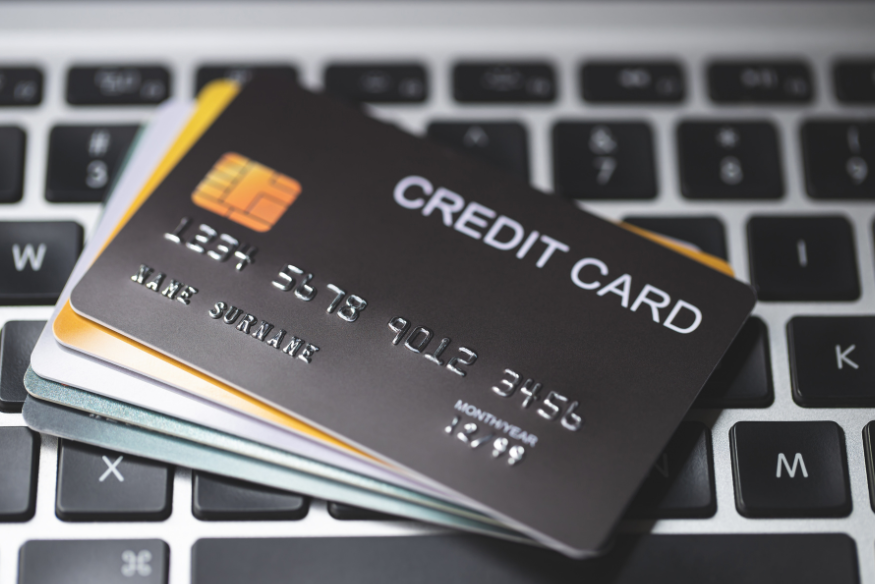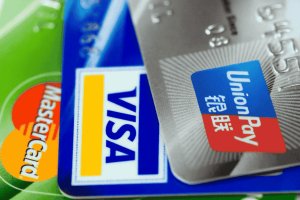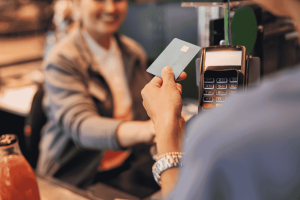Have you ever glanced at your credit card statement only to discover a charge you don’t recognize? Or perhaps you paid for a product that never arrived or a service that fell dramatically short of what was promised? You’re not alone, and you’re not powerless. Credit card disputes are a powerful consumer protection tool that can help you recover your money when transactions go wrong.
Understanding how to effectively dispute a credit card charge can save you hundreds or even thousands of dollars. But the process isn’t always straightforward, and winning your case requires knowledge, preparation, and persistence. This comprehensive guide will walk you through everything you need to know about successfully disputing credit card charges, from identifying valid dispute reasons to navigating the resolution process like a pro.
What Exactly Is a Credit Card Dispute?

A credit card dispute (also called a “chargeback”) is a formal process where you contest a charge on your credit card statement. When you initiate a dispute, you’re essentially asking your credit card issuer to investigate the transaction and potentially reverse the charge if it’s found to be invalid or fraudulent.
This consumer protection mechanism exists thanks to the Fair Credit Billing Act (FCBA), which gives you the right to dispute certain types of billing errors and unauthorized charges.
Important: Credit card disputes are not meant to be used simply because you changed your mind about a purchase or to avoid paying for legitimate charges. Misusing the dispute process can damage your relationship with merchants and your credit card issuer.
When Can You Legitimately Dispute a Credit Card Charge?
Not every disagreement with a merchant qualifies as a legitimate credit card dispute. Knowing the valid reasons for disputing a charge helps you protect yourself effectively and avoid unnecessary conflicts. Here are the key scenarios where you can rightfully challenge a transaction:
1. Unauthorized Charges (Fraud)
If you notice charges you did not authorize or recognize, you have a strong basis to dispute them. This includes:
- Transactions from merchants you’ve never done business with.
- Multiple charges from the same merchant when you only approved one.
- Charges appearing after your card was reported lost or stolen.
Did you know?
Federal law limits your liability for unauthorized charges to $50. Plus, many card issuers offer zero liability protection, meaning you won’t be responsible for fraudulent charges if you report them promptly.
2. Billing Errors
Billing errors can include a range of mistakes such as:
- Mathematical errors in calculating your bill.
- Charges for incorrect amounts.
- Charges for goods or services you never received.
- Failure to credit your account properly for returned items or payments.
3. Quality Disputes
You can dispute charges when the quality or fulfillment of goods or services falls short of what was promised:
- The item received was damaged, defective, or significantly different from its description.
- Services paid for were not performed as agreed upon.
- The merchant failed to honor their stated return policy.
4. Duplicate Charges
If you were mistakenly charged more than once for the same purchase, you have valid grounds to dispute the duplicate charges.
5. Canceled Recurring Subscriptions
If you’ve canceled a subscription service but continue to be billed, those ongoing charges are unauthorized and can be disputed.
Keep in Mind:
When disputing a charge, contact your card issuer promptly—usually within 60 days of the statement date—to maximize your chances of a successful resolution.
The Step-by-Step Dispute Process: Your Roadmap to Success
Step 1: Contact the Merchant First (In Most Cases)
Before involving your credit card issuer, try to resolve the issue directly with the merchant. This approach is:
- Often faster than a formal dispute
- More likely to preserve a positive relationship with the merchant
- Required by many credit card companies before they will process your dispute
How to approach the merchant effectively:
- Gather all relevant documentation (receipts, order confirmations, etc.)
- Reach out to customer service via phone, email, or chat
- Clearly explain the issue and the resolution you want
- Document every interaction (names, dates, details of conversations)
- Set a reasonable deadline for resolution (typically 7–14 days)
Pro tip: Stay calm and professional. Stick to facts, avoid accusations, and specify exactly what outcome you’re seeking (refund, replacement, etc.).
Step 2: Gather Your Evidence
If the merchant is unresponsive or unwilling to help, prepare to escalate your claim by collecting:
- Purchase documentation: Receipts, order confirmations, invoices
- Communication records: Emails, chat logs, or notes from phone calls
- Product evidence: Photos of damaged items or proof services weren’t provided
- Policies and promises: Screenshots of advertised guarantees, return policies, or service descriptions
- Timeline documentation: Dates of purchase, delivery (or non-delivery), and all contact with the merchant
The strength and organization of your evidence greatly impact your case.
| Type of Dispute | Most Effective Evidence |
|---|---|
| Unauthorized charge | Police report (if card stolen), statements proving you were elsewhere |
| Non-delivery | Tracking info, merchant communications about missing item |
| Defective product | Photos/videos of damage, expert assessments, merchant’s quality claims |
| Service not provided | Contract or agreement, documentation showing non-performance |
| Duplicate charge | Statements showing identical charges on the same day for the same amount |
Step 3: Initiate the Dispute with Your Credit Card Issuer
Once merchant resolution has failed and your evidence is ready, file a formal dispute. You can usually do this:
- By phone: Call the number on the back of your card
- Online: Log in to your credit card account and find the dispute option
- By mail: Send a written dispute letter to your issuer
Important: You typically have 60 days from the statement date on which the charge appeared to file your dispute — don’t delay!
When filing, be prepared to provide:
- Your account details
- Transaction date and amount
- Merchant’s name
- Reason for dispute
- Summary of steps taken with the merchant
- Supporting documentation
Sample dispute explanation:
“I purchased a laptop from TechStore on January 15, 2023, for $899. When it arrived on January 20, the screen was cracked. I contacted TechStore on January 21 and again on January 25 requesting a replacement or refund per their satisfaction guarantee policy. Despite multiple attempts, they refused to honor their policy. Attached are photos of the damage, my receipt, and email exchanges with customer service.”
Step 4: Temporary Credit and Investigation
After filing your dispute, your credit card issuer will usually:
- Issue a temporary credit for the disputed amount (within 1–2 billing cycles)
- Notify the merchant and request their response
- Review evidence from both sides
- Make a final decision
During this process:
- Continue making at least minimum payments on your card
- Monitor your account and communication channels for updates
- Be ready to provide additional information if requested
Note: The temporary credit can be reversed if you lose the dispute.
Step 5: Resolution and Follow-Up
Investigations can take weeks to months. When complete, your issuer will:
- Make the temporary credit permanent if you win
- Remove the temporary credit if you lose
- Provide an explanation for their decision
- If you win: The charge is permanently removed, and you keep the refunded money.
- If you lose: The charge is reinstated, and you’ll need to pay. Your options then include:
- Accept the decision
- Appeal with additional evidence
- File a complaint with the Consumer Financial Protection Bureau (CFPB)
- Consider small claims court for significant amounts
Advanced Strategies to Maximize Your Chances of Winning

1. Use the Right Terminology
Credit card companies and merchants respond more effectively when you use precise, industry-specific language. Instead of general complaints, frame your concerns in terms they understand:
- Replace “I want my money back” with “I’m requesting a chargeback due to merchandise not as described.”
- Instead of saying “The product broke,” say “The item failed to meet the merchant’s advertised quality standards.”
- Rather than “They won’t give me a refund,” say “The merchant has refused to honor their published return policy.”
Using the correct terminology demonstrates that you’re informed and serious, which can help your case move more smoothly.
2. Leverage Consumer Protection Laws
Know your rights and cite relevant consumer protection laws to strengthen your dispute:
- Fair Credit Billing Act (FCBA): Protects your right to dispute billing errors and unauthorized charges.
- Mail, Internet, or Telephone Order Merchandise Rule: Requires merchants to ship items within the promised timeframe or notify you of delays.
- State Consumer Protection Laws: Many states offer additional protections—research what applies in your jurisdiction.
Mentioning these laws signals that you understand your rights and may encourage faster resolution.
3. Escalate Strategically
If your initial dispute is denied, don’t give up. Instead, escalate your case thoughtfully:
- Request Reconsideration: Submit new evidence or clarify points in your original dispute.
- Ask for a Supervisor: Speak with someone who has more authority to handle complex disputes.
- File Complaints with Regulators: Reach out to the Consumer Financial Protection Bureau (CFPB) or your state’s attorney general to report unresolved issues.
- Use Social Media Respectfully: Sometimes public attention can motivate quicker action—but always remain professional and factual.
Persistence combined with a strategic approach often leads to better outcomes.
4. Document Everything Meticulously
Keep a detailed dispute journal to track your communications and build a strong case:
- Record dates and times of all contacts
- Note the names and ID numbers of representatives you speak with
- Summarize the key points of each conversation
- Save copies of all written communications (emails, letters, chat transcripts)
- Keep reference numbers for calls, case IDs, or support tickets
Pro tip: After phone calls, send a follow-up email summarizing what was discussed and any agreements made. This creates a written record of verbal interactions and helps avoid misunderstandings.
Common Dispute Scenarios and Winning Strategies
Scenario 1: Item Not Received
Winning strategy:
- Wait until after the expected delivery date plus a reasonable grace period
- Contact the merchant with tracking information showing non-delivery
- If unresolved, dispute as “merchandise not received”
- Provide order confirmation, tracking information, and communication attempts
Scenario 2: Defective Product
Winning strategy:
- Document the defect immediately with photos/videos
- Contact the merchant requesting return/replacement
- If denied, dispute as “merchandise not as described”
- Include product descriptions from website, photos of defects, and expert assessments if available
Scenario 3: Recurring Charges After Cancellation
Winning strategy:
- Obtain written confirmation of your cancellation request
- Dispute as “canceled recurring transaction”
- Provide cancellation confirmation, dates, and any acknowledgment from the merchant
- Consider updating your card number to prevent future unauthorized charges
Scenario 4: Travel Services Not Provided
Winning strategy:
- Document exactly what services were promised vs. delivered
- Gather evidence of the discrepancy (hotel bookings, flight changes, etc.)
- Calculate the value of services not received
- Dispute for the specific amount of services not provided
- Include contracts, confirmations, and communications about the service failure
What Not to Do: Dispute Pitfalls to Avoid
1. Filing Frivolous Disputes
Repeatedly submitting baseless or unwarranted disputes can have serious consequences, including:
- Closure of your credit card account
- Being blacklisted by merchants, which could limit your future purchases
- Potential legal repercussions for fraud if disputes are filed dishonestly
2. Missing the Deadline
Most credit card issuers require disputes to be filed within 60 days of the statement date on which the charge appeared. Missing this deadline usually means losing your right to dispute that charge. Set reminders and mark your calendar promptly!
3. Insufficient Documentation
Claims without solid supporting evidence are often dismissed quickly. Be thorough: provide receipts, communication records, photos, and any other relevant proof to back up your case.
4. Inconsistent Statements
Changing your story or contradicting earlier claims during the dispute process can severely damage your credibility and reduce your chances of a favorable outcome. Stay consistent and factual.
5. Disputing Before Contacting the Merchant
Many card issuers require you to make a good-faith effort to resolve the issue directly with the merchant before they’ll entertain a dispute. Skipping this step can lead to immediate rejection of your claim.
Special Circumstances: International Purchases and Digital Goods
International Purchases
Disputes involving foreign merchants can be more complicated due to:
- Language barriers that make communication difficult
- Different consumer protection laws that may apply
- The importance of shipping documentation and proof of delivery
- Currency conversion issues that might affect dispute amounts
Strategy tip: For international disputes, provide translations of any foreign-language communications and be extra meticulous in organizing your documentation.
Digital Goods and Services
Disputing charges for digital products or services comes with unique challenges:
- Proving non-delivery or defects in digital goods can be harder than with physical items
- “Buyer’s remorse” is not considered a valid dispute reason
- Terms of service for digital platforms may restrict your rights to dispute
- Products accessed even once (e.g., downloadable content or streaming access) may be considered “used,” limiting your ability to dispute
Strategy tip: Capture screenshots of error messages, malfunctioning features, or discrepancies between what was promised and what you received. Detailed records are essential.
After the Dispute: Protecting Yourself in the Future
1. Use Virtual Card Numbers for Online Shopping
Many credit card issuers now offer virtual card numbers that link to your account but can be used for specific merchants or set with spending limits.
2. Set Up Purchase Alerts
Configure your credit card to send real-time notifications for all purchases to quickly identify unauthorized transactions.
3. Regularly Review Statements
Make it a habit to review your statement line-by-line each month rather than just checking the total.
4. Keep Digital Records of Major Purchases
Create a dedicated email folder or digital file system for storing receipts, order confirmations, and product guarantees.
5. Research Merchants Before Buying
Check reviews, verify contact information, and confirm physical addresses before purchasing from unfamiliar merchants.
Conclusion: Empowered Consumer, Protected Finances

Understanding how to effectively dispute credit card charges is an essential financial skill in today’s digital economy. While the process requires attention to detail and persistence, the ability to recover your money from fraudulent charges, billing errors, or merchant failures provides invaluable peace of mind.
Remember that the dispute process exists to protect consumers from unfair practices, not to avoid legitimate charges. By approaching disputes ethically, documenting thoroughly, and communicating clearly, you position yourself for the best possible outcome.
Have you successfully disputed a credit card charge? What strategies worked best for you? Share your experiences in the comments below to help fellow consumers protect their financial rights!
Ready to take action? Start by reviewing your recent credit card statements for any questionable charges, and remember to save all receipts and confirmation emails for future purchases. The best dispute is the one you’re fully prepared to win!









